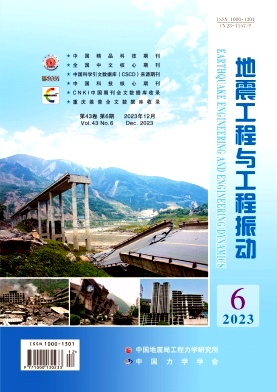A SEISMIC RISK ASSESSMENT FRAMEWORK FOR LOSS ESTIMATION OF CRITICAL INFRASTRUCTURE – HOSPITALS CASE
引用次数: 1
Abstract
In this paper, a framework developed for the seismic risk assessment and loss estimate of the Health-Care sector is described. The methodology herein presented derived from a wider study that refers to a multi-hazard (earthquake, hurricane, flood, landslide, rockfall, avalanche) and multi-asset (healthcare and energy infrastructure). The loss estimate is based on the probabilistic modelling of hazards and asset vulnerability and an overall assessment of the impact generated from the suffered damage treated as a deterministic consequence of it. Specifically, the total impact computation is based on the combined analysis of different aspects, such as physical damages, service reduction, and social impact. For the sake of completeness also the impact is evaluated per each aftermath level. It must be pointed out that in so doing the loss computed per each impact can be ensured as hazard independent. An important role in the impact evaluation is also played by resilience. A simplified evaluation of preparedness and resourcefulness at asset and local level is performed to originate a set of resilience-based coefficients which, in turn, are used to influence the evaluation of the loss per each impact component and level of damage. Finally, the Expected Annual Loss (EAL) is provided as the exponential relation between the probability of damage occurrence expressed as mean annual frequency, and the loss, expressed in economic terms. So, this relation can define the properties of damage occurrence and loss of each possible event. Thanks to the quantitative approach of the framework it can be seen how each risk aspect influence the curve properties, such as the horizontal stretch due to resilience influence on the loss degree and the vertical stretch due to vulnerability effect on the damage occurrence用于关键基础设施损失估算的地震风险评估框架——医院案例
本文描述了为卫生保健部门的地震风险评估和损失估计制定的框架。本文提出的方法源自一项更广泛的研究,该研究涉及多灾害(地震、飓风、洪水、滑坡、岩崩、雪崩)和多资产(医疗保健和能源基础设施)。损失估计是根据灾害和资产脆弱性的概率模型,以及对所受损害所产生的影响进行全面评估,并将其视为确定性后果。具体来说,总影响计算是基于对物理损失、服务减少和社会影响等不同方面的综合分析。为了完整起见,还对每个后果级别的影响进行了评估。必须指出,这样做可以确保每次撞击所计算的损失与危险无关。弹性在影响评价中也起着重要的作用。对资产和地方一级的备灾准备和应变能力进行了简化评价,以形成一套基于复原力的系数,这些系数反过来用于影响对每个影响组成部分的损失和损害程度的评价。最后,期望年损失(EAL)是用年平均频率表示的损害发生概率与用经济术语表示的损失之间的指数关系。因此,该关系可以定义每个可能事件的损害发生和损失的性质。通过框架的定量化方法,可以看到各个风险方面对曲线性质的影响,例如水平弹性拉伸对损失程度的影响,垂直脆弱性拉伸对损伤发生的影响
本文章由计算机程序翻译,如有差异,请以英文原文为准。
求助全文
约1分钟内获得全文
求助全文

 求助内容:
求助内容: 应助结果提醒方式:
应助结果提醒方式:


